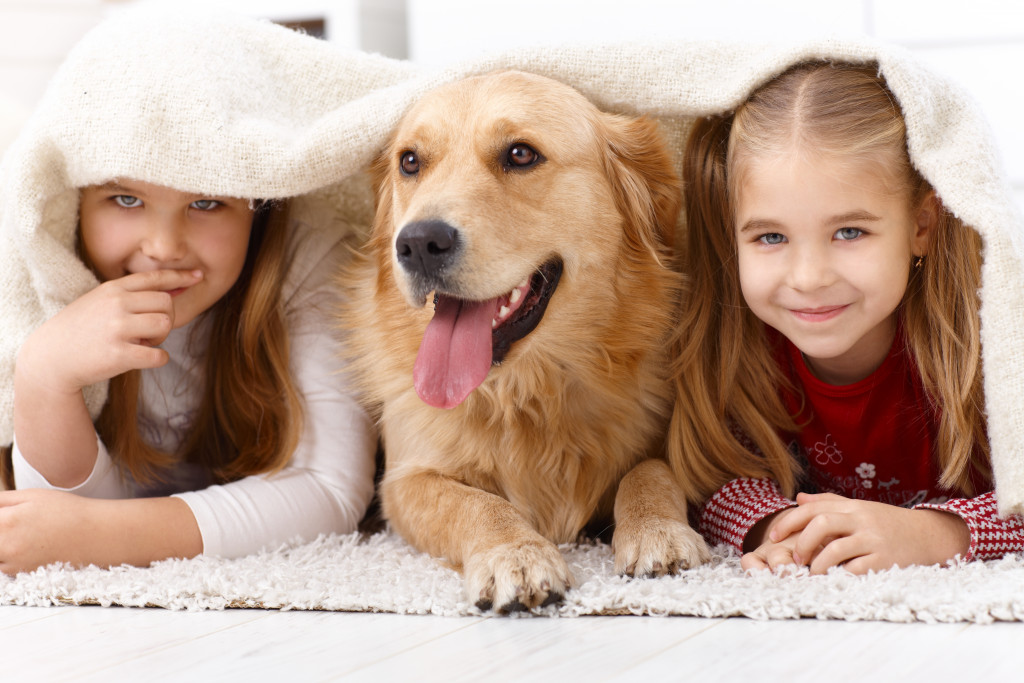- Building a house extension can provide your pets with more space and comfort in their home.
- Consider the size, roofing, outdoor space, temperature control, flooring, lighting, and electricity when planning for the pet extension.
- Hire a professional residential roofer to install the perfect roof for the new space.
- Choose flooring that is durable, safe, and easy to clean.
- Install light fixtures with covers and chew-proof electric cords for safety.
Pets are part of the family, and you love to provide them with a comfortable environment that caters to their needs. Sometimes, however, your furry friends can outgrow the space you provide them in your home.
This is where building a house extension for your pets comes in. While it is easy to imagine a pet extension as just a small room for them to play and rest, there is more to consider when planning. Here are some critical considerations when building a house extension for your pets.
What is a house extension?
A house extension is a fantastic solution for homeowners looking to create more living space. An extension involves adding onto an existing structure to increase its size and functionality.
This can be accomplished in several ways, from adding a new room onto the house to extending an existing room outward. House extensions can be a great way to add value to your home while creating a more comfortable and usable living space for you and your family.
How will you and your pets benefit?

A house extension can give your pets a larger, more comfortable space to call their own. It can also allow you to create an area specifically designed for pet activities, such as a playroom or sleeping area.
Not only that, but it can also make it easier for you to monitor their activities while they’re in the house. Lastly, having a pet extension can help keep your home clean and free of pet-related messes.
What should you consider when building a house extension
When planning to build an extension for your pets, several factors must be considered. Here are some of them:
Size of the extension
Before you start building your pet extension, it is essential to determine the size that you need. Consider the breed, age, and number of pets you have. This will help you to know how much space they need for play, sleep, and feeding. Also, consider your long-term plan and whether the extension should be large enough as the pets grow and your family expands.
Roofing
When building a house extension for your furry friends, it’s essential not to forget the roofing. Not only does a good roof protect your pets from the elements, but it can also add curb appeal to your home.
Moreover, if you want a roof that lasts for years, you must hire a residential roofing company. These expert roofers can help you choose the perfect top for your pet’s new space and install it with precision. From asphalt shingles to metal roofing, they have various options to suit your needs and budget.
Outdoor space
If possible, provide an outdoor space for your pets within the extension. Pets love to bask in the sun and enjoy fresh air. Outdoor space can also help keep them active, especially if they like running and playing in the grass. Consider adding climbing structures, fences to keep them safe, and a water source for drinking and bathing.
Temperature control
Just like humans, pets are sensitive to temperature changes. You want your pet extension to be comfortable throughout the year regardless of the weather conditions. Add adequate insulation, heating, and ventilation systems to keep the temperature constant and fresh air.
Flooring

The right type of flooring is essential for your pet extension, as it needs to be durable, safe, and easily cleaned. Avoid carpeting, as it may harbor allergens, ticks, and fleas. Instead, consider using tiles, hardwood, or vinyl flooring. These types of flooring are easier to clean and are unlikely to be damaged by animal claws.
Lighting and electricity
When it comes to lighting and electricity, you want to ensure that your pets and yourselves are safe. Install light fixtures with covers to prevent pets from getting burnt and chew-proof electric cords. Also, consider energy-efficient lighting and appliances to save on electricity bills.
The Bottom Line
Your pets deserve a comfortable and safe living space; building a house extension for them can provide just that. Consider the size of the wing, outdoor play, temperature control, flooring, lighting, and electricity when planning for the extension. With these critical considerations in mind, you can create a pet-friendly extension that your pets will love for years.




